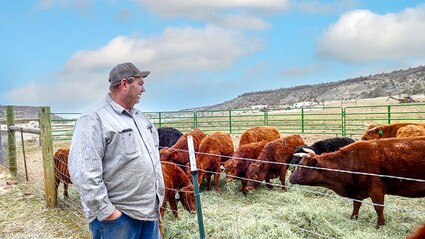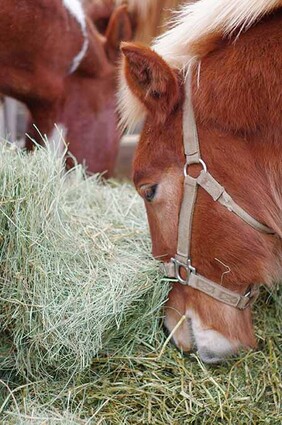Hay, what’s up with these prices?
Last updated 5/12/2022 at Noon
Hay is for horses. And cows. And sheep. And right now its price is causing Sisters Country producers and consumers to rethink their options. According to Oregon ag markets, alfalfa is up 58.8 percent in the last 12 months, and all other hay is up 37.7 percent.
“If only that were true,” said Barb Winter, who keeps three horses just a half mile north of the city limits. “A year ago I was paying $45 for an 80-pound bale of timothy grass, and today, if I can even find it, it’s costing me $80,” she fretted. “Plus I’ll have to drive to Powell Butte or Prineville.”
Her friend Casey Nolan, who has two backyard “hayburners,” as she calls them, is trying to sell one to help manage her feed bill.
“It’ll kill the grandchildren,” she said. “But with the water shortage we keep hearing about, it sounds like we’ll be paying $500 a ton by summer.”
She may be right, according to Tumalo Hay and Stables, who farm 20 acres of low-sugar hay, the kind used by horses. Dairy cows need higher-nutrition alfalfa, that is now $260 a ton — that is, if you can buy an entire truckload, to the tune of $15,600.
Hay inventory is low across Oregon and prices are at record levels. The average alfalfa price for all grades across the Northwest is over $300 per ton. This is indicative of low inventory following drought in 2021. High input prices and irrigation water availability will dissuade many producers from expanding hay production in 2022.
“It’s the fertilizer that’s killing us,” said Matt Mauer, who is the farm manager for a 100-acre spread off Holmes Road. “Last season we were paying about $600 a ton, and it has risen every month for the last 15, to where we are now at $1,100 and change.”
Prices for raw materials that constitute the fertilizer market — ammonia, nitrogen, nitrates, phosphates, potash, and sulphates — are up 30 percent since the turn of the year and now exceed those seen during the food and energy crisis in 2008, according to commodity consultancy CRU.
Mauer is also staring at water curtailment, expecting to get shut off before his second cut. The drought is all farmers and ranchers talk about when The Nugget visits with them. That, and fertilizer costs and diesel prices.
Mauer and his fellow farmers are getting more money for their hay, but it is only offsetting higher costs — if that. They now must make some high-stakes calculations. Tumalo Hay does sophisticated cost/benefit analysis as they plan to reduce the amount of fertilizer per acre by as much as 25 percent knowing that yields will suffer somewhat.
On the flip side, if farmers do apply less fertilizer per acre, it will provide an environmental benefit in the form of less nitrogen and phosphorus in streams, rivers, and lakes.
It’s more scientific than ever, they say, as compared to when water was plentiful and petroleum-based products like fertilizer were stable. April was surprisingly wetter and cooler, unexpectedly raising the snowpack from just under 90 percent in March to 116 percent by April 30 with water content equivalent at 106 percent.
That will buy farmers and ranchers a couple of critical weeks, yet none expect anything on the horizon to break the back of the long-running drought, as The Nugget has documented.
Cattle ranchers particularly are being squeezed by rising costs and the multiyear drought. Mark Huttinga has been farming and ranching since he was a kid. For the last 26 years he has worked a small corner of a 456-acre hay farm a bit upstream of Lake Billy Chinook, raising Dexter cattle and eight children. He’s throwing in his hat and moving to Montana. In the process he is selling off his herd.
“Cows need hay. Hay needs water. There’s simply not enough water,” Huttinga said.
Huttinga’s Dexters are an Irish breed averaging around 700 pounds, as compared to the much larger black or red Angus weighing in at 1,100 to 1,300 pounds. The smaller breed can do well on just a few acres, and at harvest time they don’t require a full-size freezer.
“You will see more smaller lots, some closer to town, with a cow or two or three,” Huttinga predicted.
Bonnie Nolan of Sisters is 71 and drives 200 miles a week to care for and train with her prized Dutch Warmblood horse stabled near Cline Falls.
“Between gassing my car and feeding my horse, I’m not sure I can continue owning this guy,” she said. “And who’s gonna buy him in this market? Nobody in their right mind would buy a horse now.”
Nolan’s feed bill has risen four of the past six months, but she doesn’t blame the stable where she and 39 others board. When The Nugget visited the stable, the story was the same. Equestrians, farmers, and ranchers are all being whipsawed by hay prices.



















Reader Comments(0)